 |
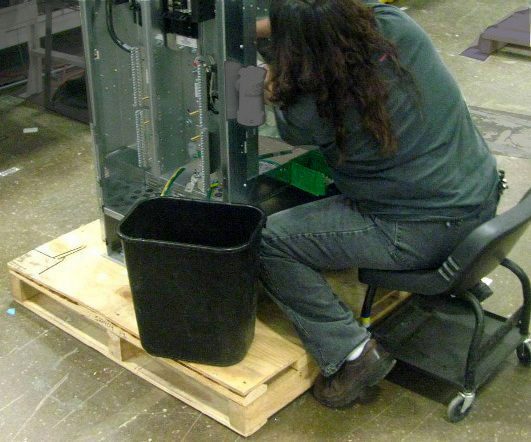 |
| Inadequate knee clearance creates twist | Inadequate lower leg clearance creates long reach |
Background
Occasionally, workstations are set up without consideration for leg and knee clearance. As a result, employees are forced into awkward working positions, which in turn can lead to difficulty in performing work and increased strain on joints.
Objectives
Provide adequate space for legs and thighs and thereby enable good working position.
Ideas and Options
Thin surfaces
 |
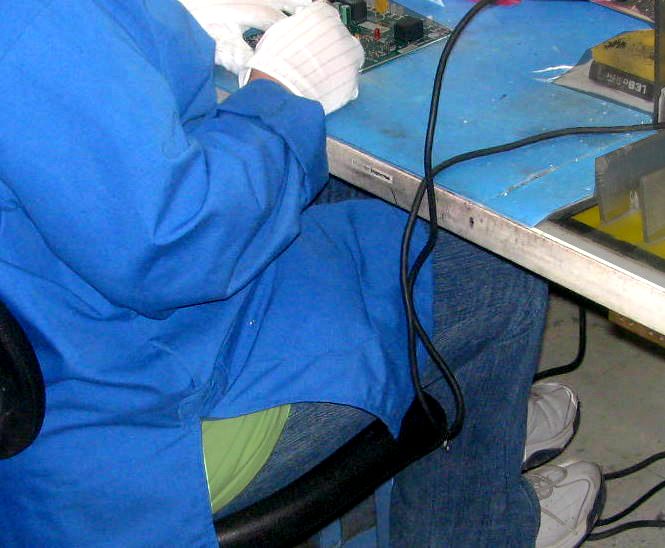 |
| Thick bench surface | Normal thin surface |
Workbench surfaces that are too thick can interfere with thigh and leg clearance. It is common especially for older benches to be too thick, sometimes because of center drawers. Normally, the surface should be thin. Occasionally, center drawers or other obstructions can simply be removed to obtain more space.
Raise heights
 |
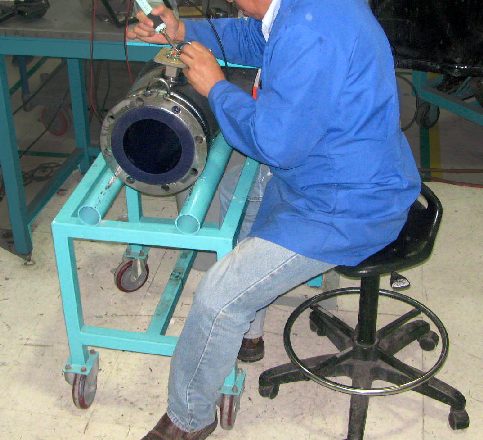 |
| Bench too low (and boxes underneath) | Cart workstation is too low |
Another issue that creates interference with leg clearance is that the height of the workstation. Many times extending the workstation legs can create clearance as well as improve working posture. Obstructions under a workbench can also be a problem. (See height adjustment.)
Indents and recesses
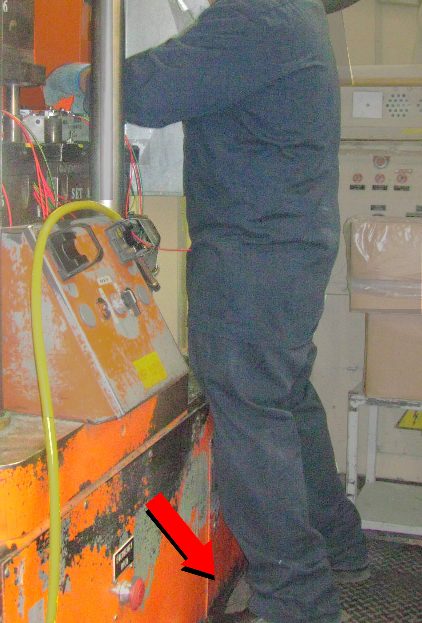 |
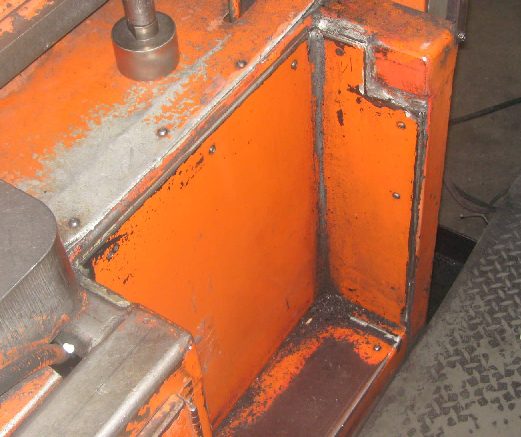 |
| Before: Constant reach, no toe clearance | After: Indent cut for toe and leg space |
This example involves a set of nearly identical machines that did not have provisions for toe and leg clearance at the operating station. To run the machines, the operators had to constantly reach out in front of them, causing shoulder fatigue and interference with production. The improvement was to cut indentations into the machine cover to provide sufficient clearance.
 |
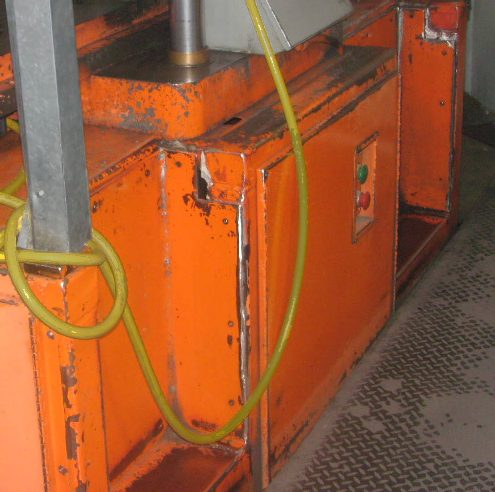 |
| Before: Unmodified machine | After: Modified machine |
These photos show a machine that had not yet been modified and one that had. Note that sometimes machine covers cannot be indented because of internal mechanisms. But surprisingly, often there is nothing behind the covers so the recesses can be made.
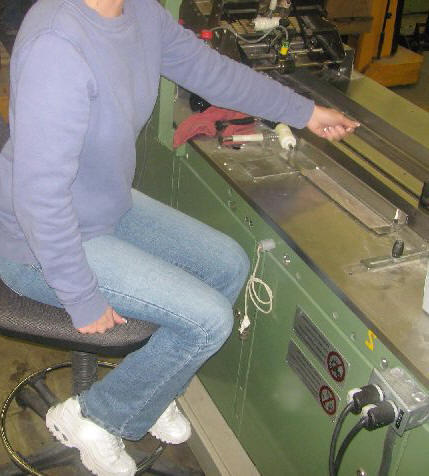 |
 |
| Before: No knee space, long reach | After: Recess cut into side for knee space |
This example is similar for a sitting job along a production line. Cutting a recess into the side of the line created sufficient knee space.
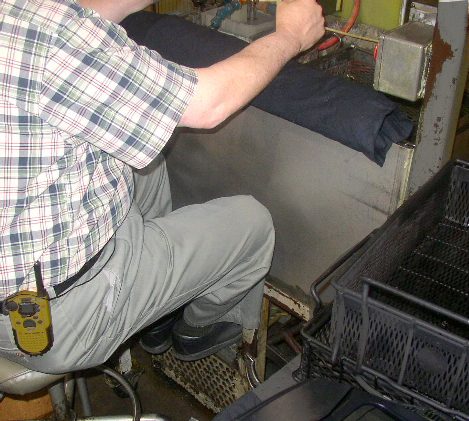 |
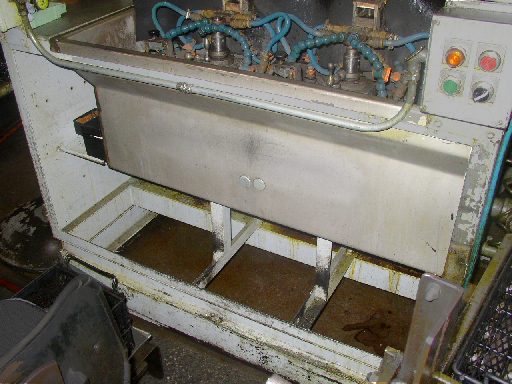 |
| Before: No knee space at water tank station | After: Indent cut into tank |
The operation in this case involved a water tank testing station (in constant use). The water tank was originally fabricated with straight sides, which inhibited productive work for the employee. The volume of water in the tank was sufficient so that indenting one side was possible.
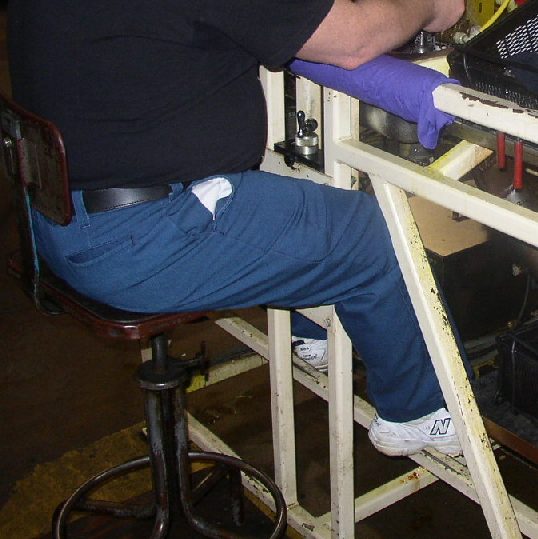 |
| After: Special frame provides better clearance |
This photo shows a similar adaptation at an adjacent workstation to the water tank above. In this case the frame was modified to provide as much knee space as was possible under the circumstances. The result is not perfect, but is an acceptable improvement.
Extend controls
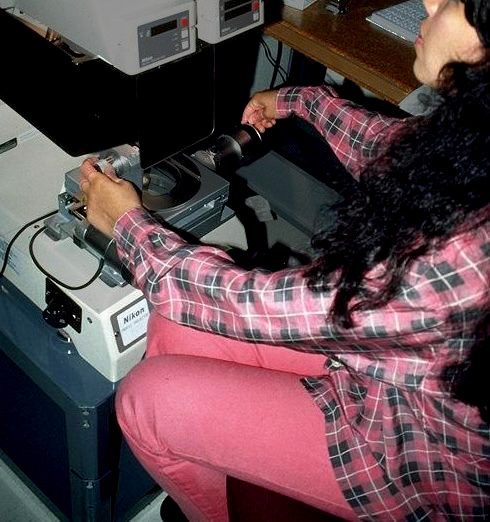 |
| Machine design |
This large piece of equipment is used for inspection of miniscule parts eight hours per day. Ideally, the equipment manufacturer should have designed the base to provide proper knee space. Simply raising the unit on a taller base was not feasible because it raised the inspection screen too high. The solution in this case was to add an extension to the controls so that the employee could operate the machine while sitting further away (unfortunately, no “after” photo).
